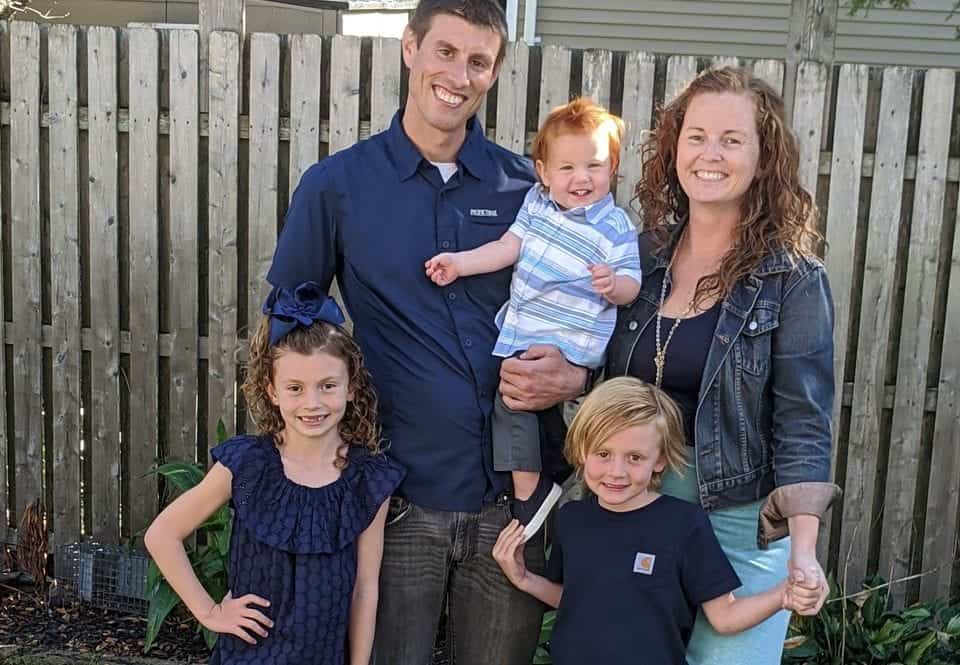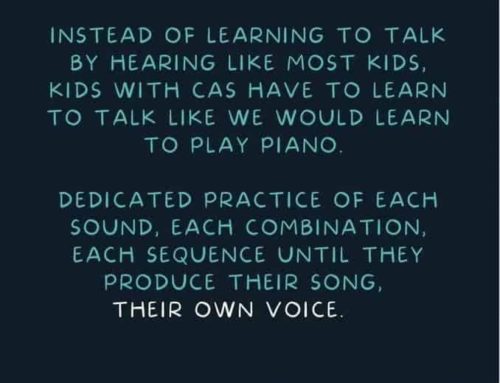In March 2020, one of Quin O’Donnell’s eyes wouldn’t open after he awakened from an afternoon nap. The symptom was alarming enough to prompt his mother to whisk him to the Pediatric Emergency Department at K. Hovnanian Children’s Hospital at Jersey Shore University Medical Center.
The 9-month-old had already been diagnosed with the flu, and was lethargic and feverish. But this new development confirmed his mother Colleen’s simmering intuition that Quin might actually be much sicker. Her immediate action—along with swift, coordinated care by specialists at the Children’s Hospital—helped prevent disaster.
Quin’s eyelid issue signaled growing pressure in his brain from a rapidly deteriorating case of bacterial meningitis. An examination of his pupil size showed they also didn’t match, a potentially dangerous sign.
“The brain pressure can build up and begin to exert force on the structures inside the head, including the nerves that control the eyelid,” explains Lawrence Daniels, M.D., medical director of pediatric neurosurgery at the Children’s Hospital. “This is usually a sign that the pressure is quite significant, dangerous and even life-threatening.”
From the Brink of Death
Just a few days earlier, most of Quin’s immediate family—sister Nora, brother Kellen and father Jesse—all tested positive along with him for influenza. But something seemed off to Colleen about her youngest, leading her to hover over his crib in the wee hours. Normally “super-social” and always smiling, the Toms River, New Jersey, infant’s crying was now pierced with high-pitched screams. He wasn’t nursing and was barely urinating.
“I’d never had this intuition with my other children,” Colleen recalls. “I felt like something was going to happen.”
Quin had received routine vaccinations that can help protect against some of the germs that can cause meningitis but are no guarantee it won’t occur. Colleen didn’t know exactly what was happening, but she was frightened enough to call ahead to the hospital to alert doctors of his imminent arrival.
The medical team was standing ready, which also shaved critical minutes off his time to treatment. Doctors and nurses quickly realized Quin was on the brink of death. “They wasted not a minute,” Colleen says, “which I believe is a key component to how Quin’s life was saved.”
Richard Sultan, D.O., director of inpatient pediatric neurology services, told Colleen that her son very likely had meningitis, but that the baby shouldn’t undergo a spinal tap to confirm the diagnosis, as is typically done. Why? Because there was growing pressure in Quin’s brain, the test could cause a fatal complication from the rapid release of fluid accumulating around his brainstem.
With Quin’s heart rate showing distress and time of the essence, he was immediately moved to the pediatric intensive care unit (PICU) and prepared for emergency neurosurgery. Dr. Daniels inserted an external ventricular drain, or EVD, at the top of Quin’s skull to remove excess fluid surrounding his brain. He was also sedated and intubated Quin to make sure his oxygen supply wasn’t disrupted.
The rapid hand-off between neurologist and neurosurgeon epitomizes the trusted team approach and deep level of expertise available at the Children’s Hospital. “Quin would not have survived the day without everything we did for him,” Dr. Sultan says. “There’s a real coordination of care here and a lot of experience putting our heads together. Our pediatric department is big enough that we handle everything, but unique enough with its communication skills that everyone’s on the same page.”
Close Monitoring
After the procedure, Quin was closely monitored by pediatric critical care specialist Andrew McInnes, M.D., and PICU nurses, who remained in his room throughout the night. While his EVD operation was considered a success, Quin’s outcome was still uncertain.
“It was comforting to know that if anything happened, they weren’t more than 18 inches away from my baby,” Colleen says.
“When meningitis is diagnosed in children, it can be severe and we need to take care of it quickly. It’s one of those mysteries of medicine why some kids get meningitis and others don’t,” Dr. McInnes says. “We all have bacteria living in our nose and mouth, and sometimes these bacteria become problematic and cause infection, which is probably how this happened for Quin.”
The next morning brought Quin’s parents fresh worry as doctors ordered an electroencephalogram (EEG) to test Quin’s brain activity and function. “It was a punch to the stomach,” Colleen recalls.
Fortunately, the test not only showed that electrical signals in Quin’s brain were normal, but also indicated he hadn’t suffered any seizures, a common meningitis complication. He had sustained a significant blow to his brain development, however.
Before his medical crisis, Quin had been pulling himself up to stand and cruising around rooms holding furniture. But the immediate aftermath of the illness stripped away all of these milestones, and Quin could barely hold up his own head, much less sit up or crawl. “He lost 98 percent of his skills,” Colleen says.
But they wouldn’t stay lost for long if his parents and doctors had their say. It took 10 days for Quin to wake up “ornery like a bear” and weeks longer to return to his sunny disposition, but his caregivers immediately and continually stimulated his arms and legs to begin rehabilitation. Colleen, who works with children with autism, tapped the expertise of her colleagues to inform their efforts.
Collaborative Plan
Enter the COVID-19 pandemic: As hospitals began limiting outpatient services to protect against virus spread, the O’Donnells and Children’s Hospital specialists hatched a collaborative plan to ensure Quin received the ongoing physical, occupational, feeding and speech therapy he desperately needed to recover.
His doctors proposed opening up the hospital’s outpatient pediatric clinic to work one-on-one with Quin on a regular schedule. The personalized strategy also enabled the boy and his family to avoid possible COVID-19 exposure from an inpatient rehabilitation stay after hospital discharge.
The O’Donnells pulled their weight by rigorously working with Quin at home and making sure he was gaining weight even while on a feeding tube. “I felt so supported by a hospital this size coming to us and saying, ‘We want to help your sick child get better, and here’s how we’re going to do that,’” Colleen says. “We felt so blessed that this therapy team really worked with us and individualized his discharge plans.”
Now a robust toddler, Quin receives ongoing therapy and check-ups, and all follow-up EEGs since his hospitalization continue to show normal brain activity. With his bright blue eyes and red hair, he’s back to scooting around the room with a tiny car under his palm and messing with his siblings’ toys.
Relief and Gratitude

“To the naked eye, I don’t know that people would know he has developmental delays at this point,” Colleen notes. “He’s not fussy or crying to communicate. He’s not walking yet, but we’re not super-concerned because he’s crawling fast.”
Indeed, Quin’s doctors believe it’s just a matter of time before the little boy catches up to other toddlers his age. “Going through a life-threatening event, you expect a child to have some delays,” Dr. Sultan explains. “But I’m confident he’s going to catch up.”
With her son’s immediate crisis behind them, Colleen basks in relief and gratitude. “I can’t even begin to describe in words how I feel about the level of care Quin has received,” she says. “As much as they were the experts, they also let us have an active role and a voice and let us be parents. In a heartbeat, I tell anybody that his doctors saved his life.”
Source: https://www.hackensackmeridianhealth.org/patient-perspectives/overcoming-meningitis/


